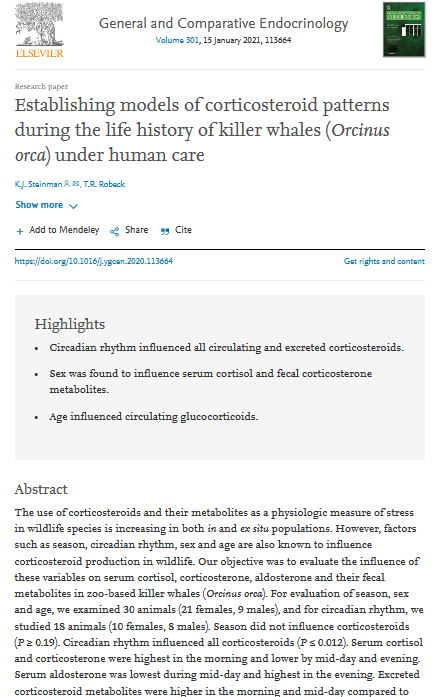18.12.2020
Establishing models of corticosteroid patterns during the life history of killer whales (Orcinus orca) under human care
General and Comparative Endocrinology, 2021
Like humans, marine mammals can get stressed out, and accurate stress measurement in wildlife is fundamental to understanding how animals cope with and respond to perturbations in their environment. For killer whales (Orcnius orca), environmental contamination and other anthropogenic stressors, such as vessel disturbance and fisheries, are major stressors. To better understand the stress level of whales, researchers use corticosteroids as a physiologic measure of stress in both captive and free-living populations. However, factors such as season, circadian rhythm, sex and age are also known to influence corticosteroid production in wildlife. Models of corticosteroid patterns for killer whales during ordinary life events and acute stress may serve as a guide for evaluating stress physiology and animal welfare in this species.
A recent study by Steinman and Robeck established models of corticosteroid patterns during the life history of killer whales under human care. In this study, the authors used ELISA kits from Arbor Assays to measure corticosteroid and aldosterone production in zoo-based killer whales. The study determined the importance and influence of season, circadian rhythm, age and sex when evaluating corticosteroids and their relationship
to stress physiology. No influence of season on either circulating corticosteroids or their fecal metabolites was found, but circadian influences on all hormones and metabolites were observed, providing more insight into the stress physiology of the killer whale populations. This study will help pave the way in developing methods to assess stress physiology and animal welfare using corticosteroid analyses.
>> View article


